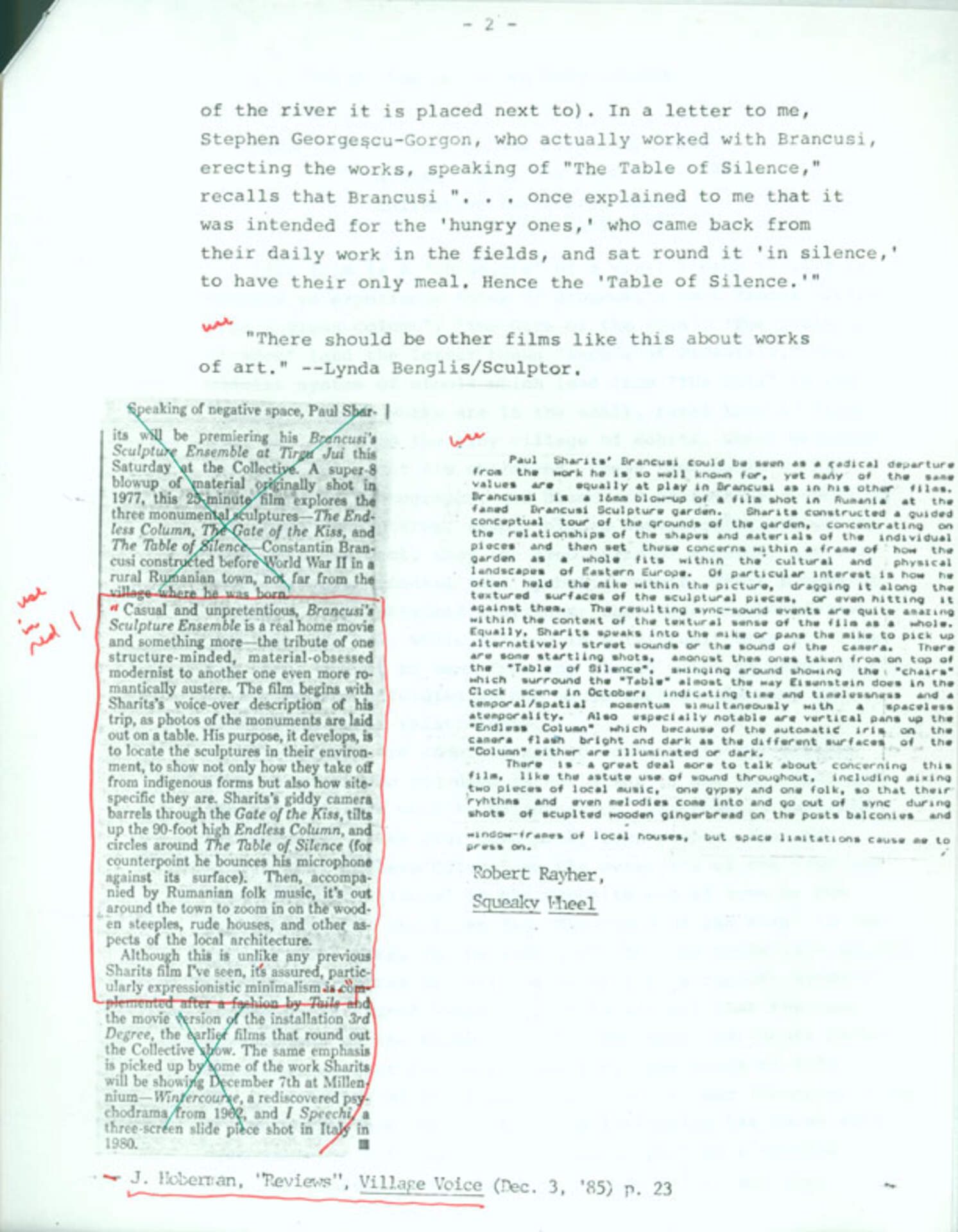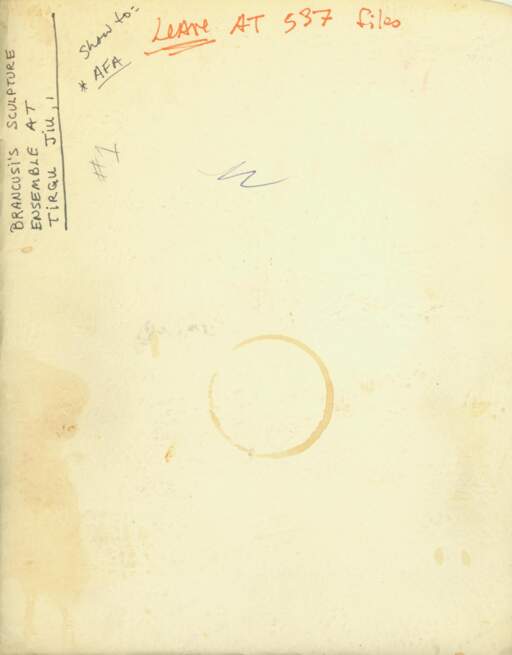Paul Sharits (1943-1993)Untitled (Project Description)
1985
photocopy
11 x 8 1/2 inches
Gift of Christopher and Cheri Sharits, 2006
of the river it is placed next to). In a letter to me, Stephen Georgescu-Gorgon, who actually worked with Brancusi, erecting the works, speaking of “The Table of Silence,” recalls that Brancusi “…once explained to me that it was intended for the ‘hungry ones,’ who came back from their daily work in the fields, and sat round it ‘in silence,’ to have their only meal. Hence the ‘Table of Silence.’”
“There should be other films like this about works of art.” -- Lynda Benglis/Sculptor.
“Casual and unpretentious, Brancusi’s Sculpture Ensemble is a real home movie and something more—the tribute of one structure-minded, material-obsessed modernist to another one even more romantically austere. The film begins with Sharits’s voice-over description of his trip, as photos of the monuments are laid out on a table. His purpose, it develops is to locate the sculptures in their environment, to show not only how they take off from indigenous forms but also how site-specific they are. Sharits’s giddy camera barrels through the Gate of the Kiss, tilts up the 90-foot high Endless Column, and circles around The Table of Silence (for counterpoint he bounces his microphone against its surface). Then accompanied by Rumanian folk music, it’s out around the town to zoom in on the wooden steeples, rude houses, and other aspects of local architecture.
Although it is unlike any previous Sharits film I’ve seen, it’s assured, particularly expressionistic minimalism…”
- J. Hoberman, “Reviews”, Village Voice (Dec. 3, ’85) p.23
Paul Sharits’ Brancusi could be seen as a radical departure from the work he is so well known for, yet many of the same values are equally at play in Brancusi as in his other films. Brancussi(sic) is a 16mm blow-up of a film shot in Rumania at the famed Brancusi Sculpture garden. Sharits constructed a guided conceptual tour of the grounds of the garden, concentrating on the relationships of the shapes and materials of the individual pieces and then set these concerns within a frame of how the garden as a whole fits within the cultural and physical landscapes of Eastern Europe. Of particular interest is how he often held the mike within the picture, dragging it along the textured surfaces of the sculptural pieces, or even hitting it against them. The resulting sync-sound events are quite amazing within the context of the textural sense of the film as a whole. Equally, Sharits speaks into the mike or pans the mix to pickup alternatively street sounds or the sound of the camera. There are some startling shots, amongst them ones taken from on top the “The Table of Silence”, swinging around showing the “chairs” which surround the “Table” almost the way Eisenstein does in the Clock scene in October: indicating time and timelessness and a temporal/spatial momentum simultaneously with a spaceless atemporality. Also especially notable are vertical pans up the “Endless Column” which because of the automatic iris on the camera flash bright and dark as the different surfaces of the “Column” either are illuminated or dark.
There is a great deal more to talk about concerning this film, like the astute use of sound throughout, including mixing two pieces of local music, one gypsy and one folk, so that their rhythms(sic) and even melodies come into and go out of sync during shots of sculpted wooden gingerbread on the posts balconies and window-frames of local houses, but space limitations cause me to press on.
Robert Rayher,
SqueakyWheel


